While talking about street food in Istanbul, one cannot help but mention the centuries of cultural exchange and migration that culminated in the culinary dishes. Major influences of Byzantine, Ottoman, Middle Eastern, and Central Asian cultures, had a sway on the Istanbul cuisines. Here, the focus has always been on procuring fresh and local ingredients. From appetisers, kebabs, rolls, and baked potato stuff, to dried bean stew, every nook of the city is filled with the aroma of delicacies. The street food has evolved from the traditional dishes to reflect the city’s multiculturalism while retaining the essence. Let’s navigate the street food choices to indulge on your trip here.
Best Street Food In Istanbul: Top 10 Must-Try Dishes
Street-side vendors are brimming with the most lip-smacking and authentic dishes. Each is iconic and a cult classic, a testimony to time itself. Let’s have a look at this list for more details.
1. Kumpir
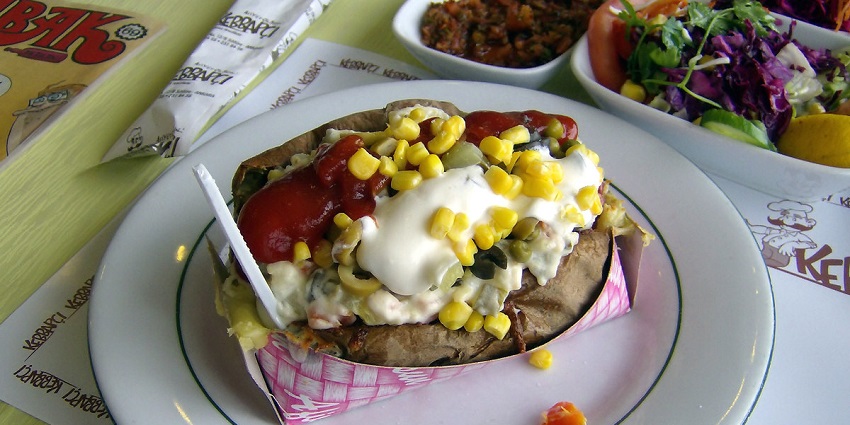
Photo: Atilim Gunes Baydin / Wikimedia Commons
A popular Turkish delicacy, kumpir is at its essence a stuffed baked potato with a creamy and cheesy base and tasty toppings of corn, beef sausage, Olivier salad, pickles, and mayonnaise. The combination of different textures and flavours adds to the delicacy of kumpir. The crispy exterior is perfectly complemented by the intense cream spiced with a plethora of tangy ingredients as toppings. The dish harmoniously blends saccharine corn mixed with heavenly cheese and spicy pickles. Some neighbourhoods are known for the vast array of topping flavours that add a different tweak to the experience of munching on a kumpir. You may choose from vegetables, non-veggies, minced fish, and sausages as your topping options.
Where To Try: Ortaköy neighbourhood
2. Lahmacun
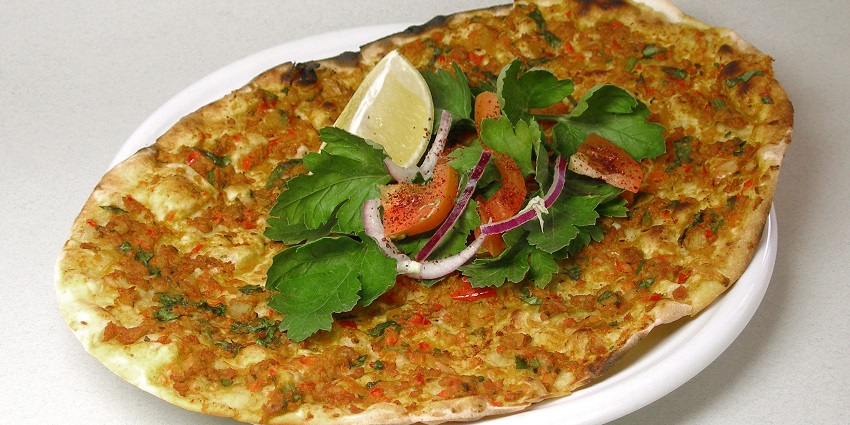
Photo: Rainer Zenz / Wikimedia Commons / Image For Representation Only
Fondly referred to as the Turkish Pizza, Lahmacun is a savoury Middle Eastern dish that has its origin in the Levant. Lahmacun is a thin flatbread with meat toppings besides veggies, herbs, paprika, and a pinch of chili pepper. The dough is made thin and rolled out into a disc shape. This street food in Istanbul is served with fresh vegetables with a dash of lemon juice. The spicy and tangy taste is balanced by the calming presence of herbs. It is the quintessential Middle Eastern flavour that is easily found in the street corners. Lahmacun can be eaten as a snack or as a side dish with other mezze dishes.
Where To Try: Halil Lahmacun in Kadıköy
3. Balık Ekmek
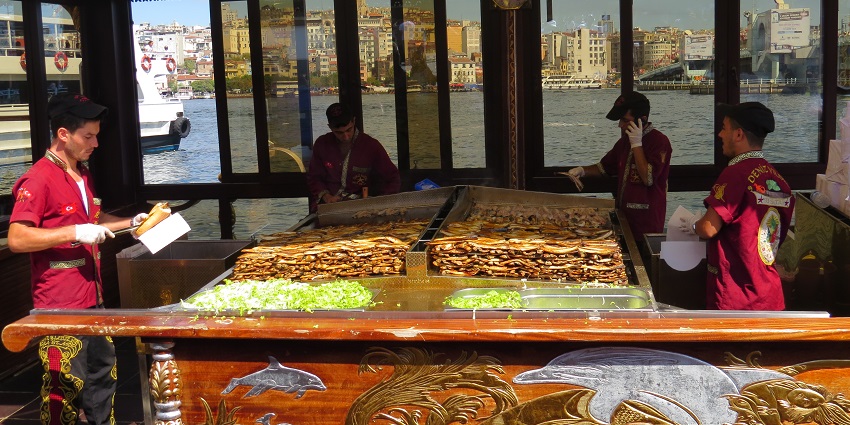
Photo: David Berkowitz / Wikimedia Commons / Image For Representation Only
A zesty addition to the street food landscape in Istanbul, Balık Ekmek translates to “fish on bread”. It is a grilled fish sandwich made of Turkish bread. Although widespread across the entire city, the sandwich is made best near the fishing colonies. Mackerel is commonly selected because it can be grilled well. What adds to the taste is the smoky flavour of the fish while the bread is kept slightly crispy. The sandwich is stuffed with lettuce, onions, red cabbage, and chilli peppers. It is sold near waterfronts, from the boats. Sometimes, chilli paste and paprika are also added to bring out the rich flavour profile.
Where To Try: Karaköy, Eminönü
4. Simit
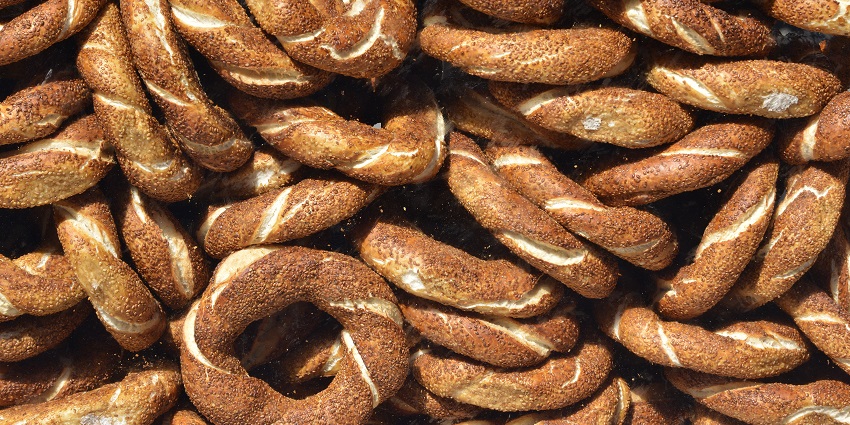
Photo: Miomir Magdevski / Wikimedia Commons
A staple street food in Istanbul, Simit is prepared with Turkish bread, which has a crust of sesame seeds. Simit is extremely crunchy and delightful to chew on. The sesame lends its nutty flavour. Grape molasse is another important ingredient that balances the sweetness of the bread. Simit is a beloved breakfast option sold across stalls, street carts, and fancy bakeries. Simit originated in the 17th century, during the regime of the Ottoman Empire. While it was inherently a white, flat bread, it evolved through centuries to include sesame seeds– an exemplary feature of this bread. Today, it is an important cultural icon of the city. It is often relished with tea, as evening snacks, and with cheese.
Where To Try: Taksim Square and Istiklal Caddesi
5. Midye Dolma
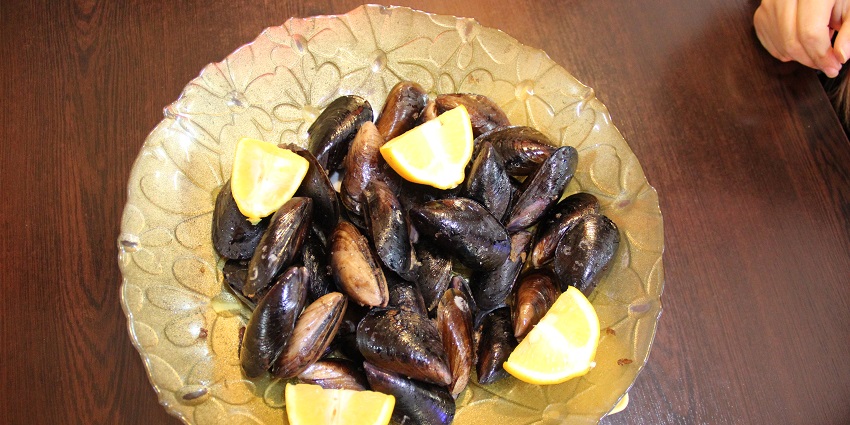
Photo: Fenerli1978 / Wikimedia Commons
Midye Dolma is stuffed mussels with a filling of pine nuts, herbs, and rice. The mussels are served in shells and are convenient to find on the streets. Its filling contains a stuffing of rice, currants, spices, and tomato paste. As a savoury street food in Istanbul, it is also symbolic of Istanbul’s thriving coastal life and culture. The regional variations of Midye Dolma make it an interesting try across the different locations. These variations contain a host of spices and are sometimes served with squid ink instead of the usual lemon juice. Midye Dolma is one of the crucial festive meals and is typically enjoyed during celebrations.
Where To Try: Bosphorus, Kadıköy, and Beyoğlu
6. Kokorec
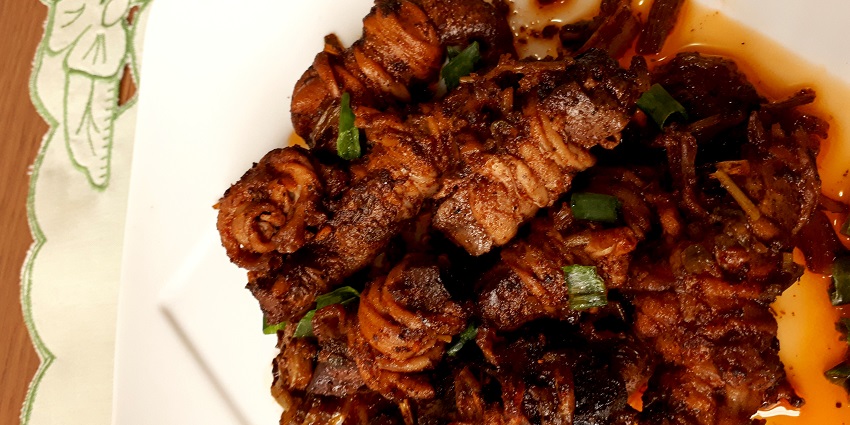
Photo: АннаМариа / Wikimedia Commons
The grilled lamb intestines undeniably have a craze among the various options of street food in Istanbul. The intestine is chopped and mixed with onions, spices, and garlic. This mix is wrapped in bread and served with a squeeze of lemon juice. Kokoreç is grilled over charcoal for a smoky flavour. The bread is all about the crunch and crispness that only street foods can offer. Kokoreç in Istanbul is usually enjoyed as a late-night snack. Kokoreç is a testimony to the ancient history of cooking intestines in Turkish culture. In the modern variations, oregano, chilli flakes, and cumin are found.
Where To Try: Şampiyon Kokoreç in the Beyoğlu area
7. Pilav
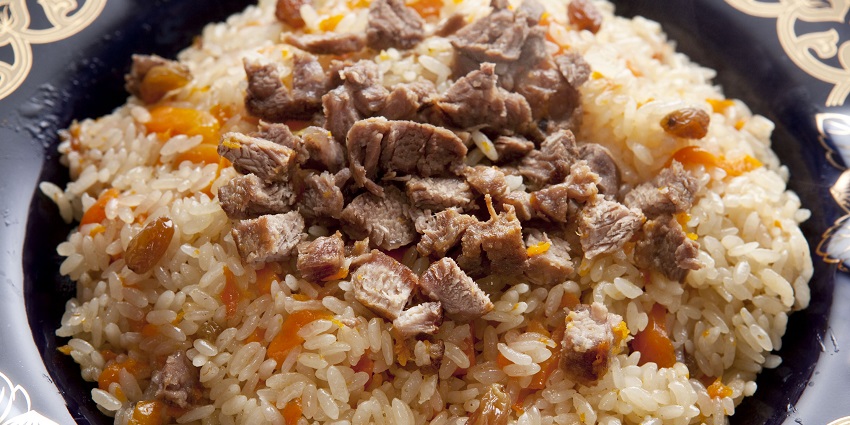
Photo: Mizu basyo / Wikimedia Commons / Image For Representation Only
The street rice is also served as Tavuklu Pilav (Chicken Rice) cooked in chicken stock and seasoned with chickpeas and fat chicken breast. Pilav is a traditional Turkish dish and is found in street-side joints quite late into the night. In Ottoman culinary history, Pilav is intricately associated as it once was reverently served as a ceremonial dish. Besides chicken, the pilav is also served with stew, turkey, and kebabs. The rice is often customized with nuts, spices, and dry fruits. Food connoisseurs find themselves allured because of the distinct quality of the rice grain that does not stick.
Where To Try: Emin Sinan, Atatürk (Bağcılar)
8. Islak Burger

Photo: Kurmanbek / Wikimedia Commons
Islak hamburger is a popular street food in Istanbul. The burger is generously coated with garlic-tomato sauce, which renders it succulent and sweet. This process also makes it wet and soggy– giving them the distinct identity of being the wet burgers of Istanbul. Garlic, butter, and ketchup are the main ingredients of the tomato sauce. The patty is a delicious affair of ground beef, breadcrumbs, onion, garlic, egg, cumin, and black pepper. For seasoning, cumin, paprika, and black pepper are drizzled. The burger is another darling late-night staple and popular among the after-bar crowds. Besides street vendors, restaurants also offer some finger-licking varieties.
Where To Try: Taksim Square
9. Durum
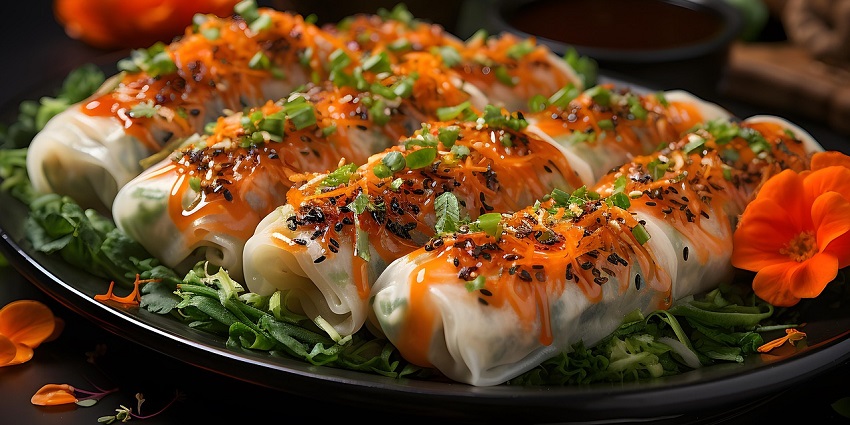
Photo: DuckaHouse / Pixabay / Image For Representation Only
Durum Kebab contains a flatbread called yufka or lavash, which is used as a wrap. Seasoned bread is neatly stacked in a cone shape on a rotisserie. This cuts the meat into thin slices for the wrap. For the stuffing, thinly sliced lamb or beef are used although other options in meat and vegetables are also available. Lettuce, tomatoes, and onions are also drizzled in the filling. A variety of sauces are sprinkled with garlic, yoghurt, and tomato. Once the ingredients are in place, the Durum is rolled up. The kebab is a Turkish cuisine, and its origins are traced back to the time of the Ottoman Empire. Two main varieties of Durum dominate the street food in Istanbul, Soslu Dürüm, a saucy dürüm and Kaşarlı Dürüm, which translates to cheese dürüm.
Where To Try: Kemerburgaz, Grand Bazaar
10. Tantuni
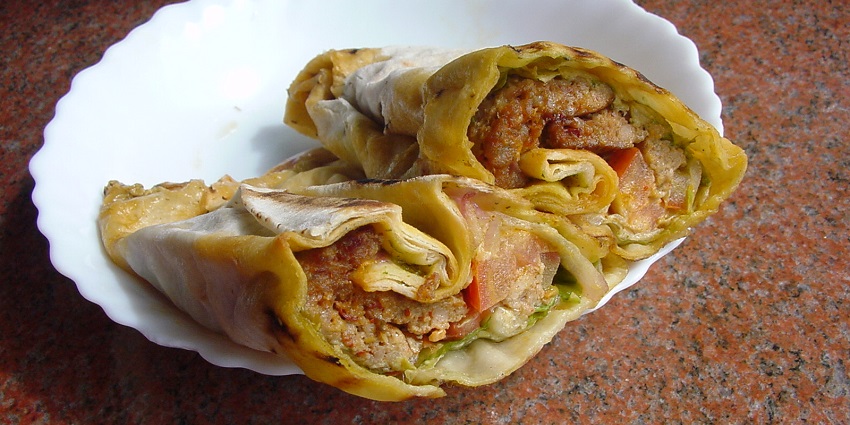
Photo: SoHome Jacaranda Lilau / Wikimedia Commons / Image For Representation Only
Tantuni is a wonder of Mersin, and it contains sliced beef or lamb air-fried with spices and served in a wrap. The popular lavash bread is used and the meat is usually cooked on a pan or dedicated girdle. Locals love chicken tantuni, or sometimes yoghurt. Tantuni rolls are savoury and its stalls are dotted across the city. The name is derived from the charming sound of tun-tan-tun generated while preparing the roll on the pan. Among the many variations, foodies love cheddar chicken, cheese chicken, tavuk Tantuni Dürüm, and beef tantuni.
Where To Try: Suat Usta Mersin Tantuni
Istanbul is at a major intersection of different spice routes from where spices and condiments have forayed into the culinary scene. One inventive way to discover Istanbul is through its foods that line up the street-side stalls. As you explore the street food in Istanbul’s serpentine mazes of cobblestone, you engage in an unforgettable rendezvous with the city. The Mediterranean, Middle Eastern, and Central Asian influences on the gastronomy scene are a treat in itself. The diverse culinary dishes serve as a roadmap to touring the vibrant city. Come explore Istanbul with TripXL as your travel partner, now.
Cover Photo: Onur / Pexels / Image For Representation Only


 WhatsApp
WhatsApp
 Twitter
Twitter









